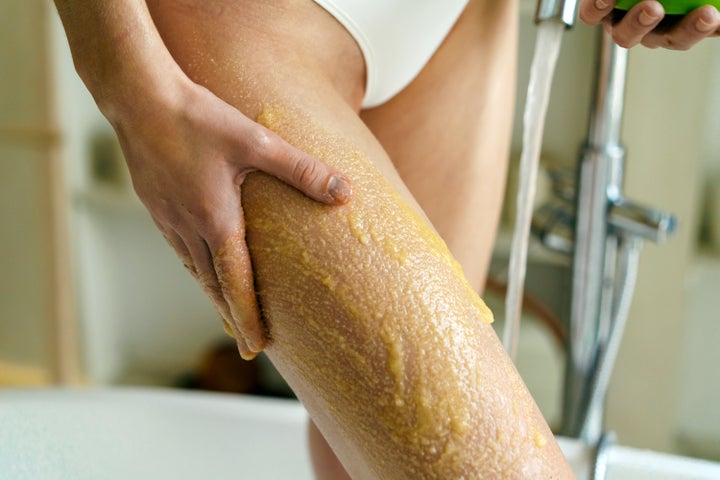
Don’t get me wrong, I’m happy for the rest of you that summer is well on its way.
But as a pale-skinned lass with what my waxing lady calls a “healthy” supply of thick, dark hair, I can’t help but start stressing about the ingrown hairs the season will inevitably bestow upon me.
And it looks like I’m not alone. According to Google Trends, the topic is getting frantically searched in the UK (just in time for a sunny weekend).
So, in the name of Good Service Journalism – and slightly out of hirsute self-interest – I thought I’d ask the pros how they avoid the frustratingly folded follicles, as well as what to do once an ingrown hair has formed.
Here’s what I found out.
Want to prevent ingrown hairs in the first place? Don’t skip exfoliation
According to Sarah Louisa Carswell of Ingrown Out, you’ll want to prevent dead skin buildup from forming around any area you regularly shave or wax.
“It’s important to use a thick-grained cosmetic scrub” to remove dead skin cells, she says – though if you’re tackling delicate areas, like your bikini line, you’ll want to make sure you’re not using anything too harsh or heavily-fragranced.
This helps to keep the top layer of skin exposed, meaning rogue hairs never get a chance to become trapped under your dermis.
Rethink your skin-tight summer wardrobe
Carswell says that when it comes to preventing ingrown hairs, going with the flow (...y garments) is key.
“Tight clothing is restrictive and pushes the hair against the skin,” she says.
Carswell shared that “the chance of the hair becoming stuck or growing back into the skin are higher when wearing tight clothing,” and the friction your favourite lycra clothes create can also “break” the hair, resulting in ingrown misery.
As such she recommends avoiding leggings, tight vests, and most importantly, super-tight undies to achieve that silky-smooth finish.
Got a tough-to-budge, deeply buried ingrown hair? For the love of all that’s holy, don’t try to pull it out
Carswell reckons you shouldn’t try to squeeze or pick the hair yourself, and that it’s important to avoid plucking a hair that isn’t yet near the surface.
As “this can cause infection and possible skin scarring”. Not exactly a better look than a bit of ingrown hair, right?
Instead, she says, you should use sterile tweezers to lightly coax the trapped hair out.
She recommends “lightly scratching the surface of the skin with the hook end of the tweezer. If after a few light strokes across the ingrown hair hasn’t
released, do not proceed further”.
In other words, don’t break the skin to force the hair out. A better approach, she says, is to exfoliate and moisturise the area. “This is the only way forward to remove the dead skin cells and hydrate the skin,” she adds.
If you focus on adding moisture and removing buildup to the skin, she says, “eventually the ingrowing hair will reach the surface” – making it ripe for a safe but oh-so-satisfying pluck.
So patience is key for stubborn ingrown hairs.
Don’t skip aftercare
Carswell says that how you treat a recently removed ingrown hair is as important as how you banished it in the first place.
She suggests keeping the area as germ-free as possible, which makes sense – after all, it is sort of an open wound.
Carswell’s recommendations include applying an antiseptic cream three times a day, using antibacterial tea tree oil in the shower, and settling down for a salt bath “twice a week for at least 20 minutes”.
So to recap: stay on top of your skincare, don’t wear tight clothes, don’t pluck or squeeze the ingrown hair, and don’t neglect aftercare.
And as someone who still has a Scar of Shame from a poorly-managed ingrown hair, I highly recommend you follow this advice.